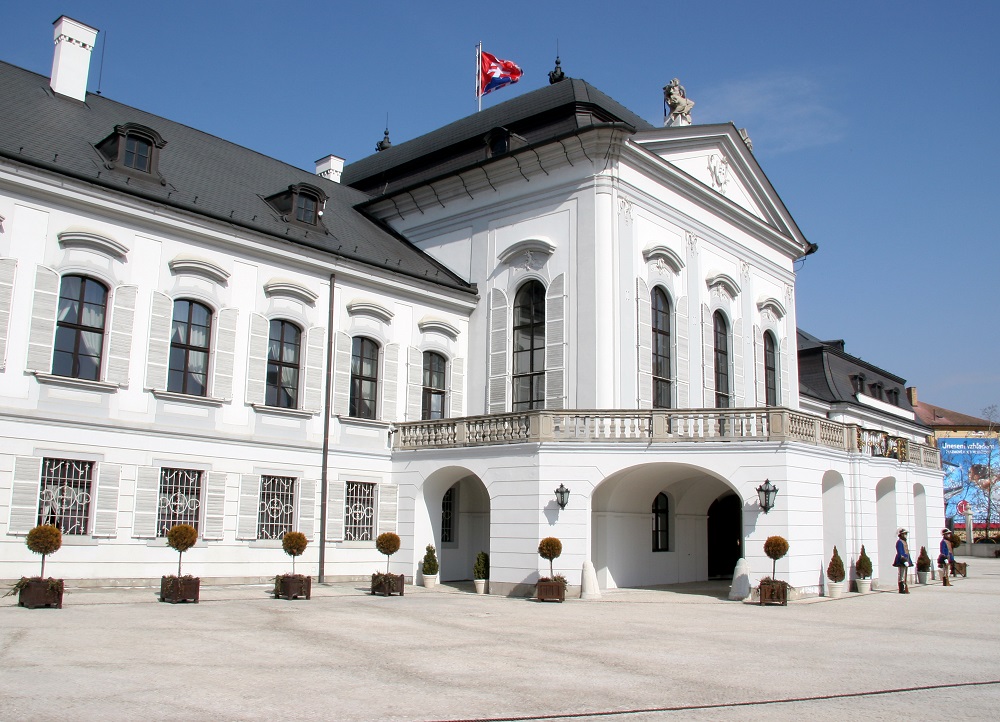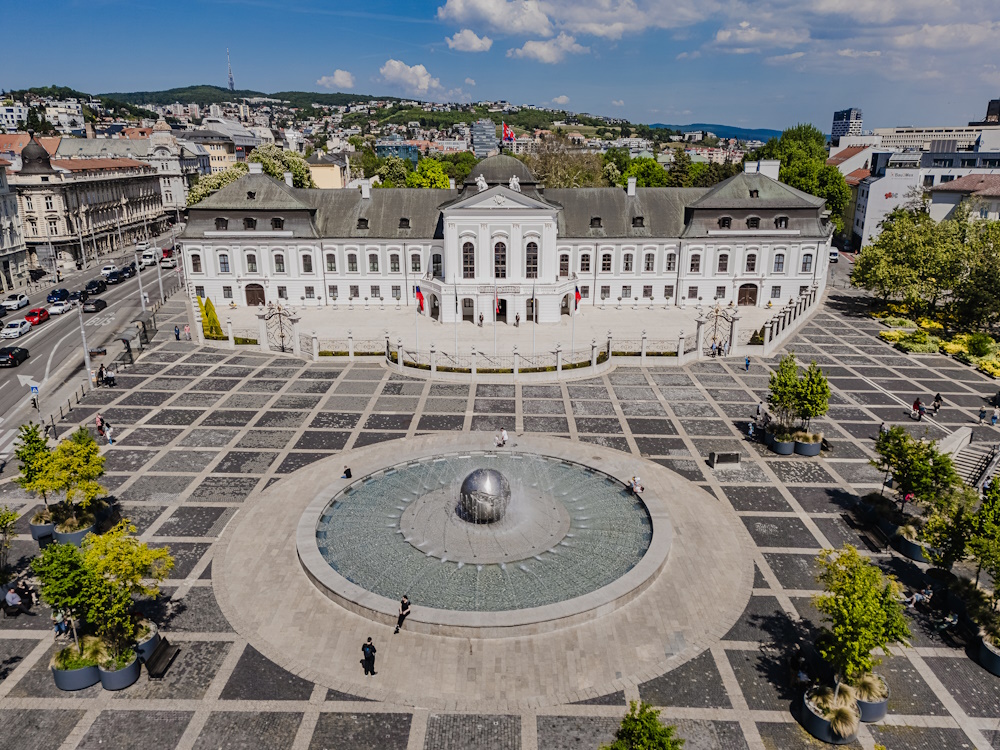Seat of the President of the Slovak Republic

The Grassalkovich Palace, now commonly referred to as the Presidential Palace is one of the most historic buildings in Bratislava and, since September 1996, the official seat of the President of the Slovak Republic. Its story began in the eighteenth century and is linked to the powerful Hungarian nobleman, lawyer, President of the Royal Hungarian Court Chamber and confidant of Queen and Empress Maria Theresa, Count Anton Grassalkovich, who decided to build his summer residence at Bratislava.
Grassalkovich envisaged a symbol of his status on the outskirts of the city where the kings of Hungary were crowned. The palace that he built at Suché Mýto, then still outside Bratislava’s walls, soon became a venue for balls and other social events attended by the Imperial court. Its design is usually credited to Andrej Mayerhofer, though some sources mention Anton Hillebrandt. The palace often hosted famous guests; in 1775 the Empress and Queen of Hungary, Maria Theresa, stayed there.

From the end of the First World War to 1939, the palace was used as a military headquarters; during the Second World War, it was refurbished to serve as a residence for the President of the Slovak State. Later, the palace became an activity centre for children officially entitled the “Klement Gottwald Central House of Pioneers and Youth”. The children called it “Pinkáč” and took part in drama, music and modelling groups and classes in ballet, ballroom dancing and folk dancing. A successful photography club operated in the attic. At the end of the 1980s, plans were made to turn the palace into a gallery.
After the Velvet Revolution and the independence of the Slovak Republic in 1993, it was recognised that the country needed a seat fit for the head of the new state. Various options were considered, but in the end, this historic building was chosen. The renovation work took three years. On 30 September 1996, the President of the Slovak Republic, Michal Kováč, symbolically received the keys to the palace and it became the official seat of the president.
When the president is present, there is a guard of honour in the palace forecourt from 8.00 am to 6.00 pm on working days. There is a ceremonial changing of the guard accompanied by a trumpet at 12.00 pm and ordinary changes of the guard take place hourly.
